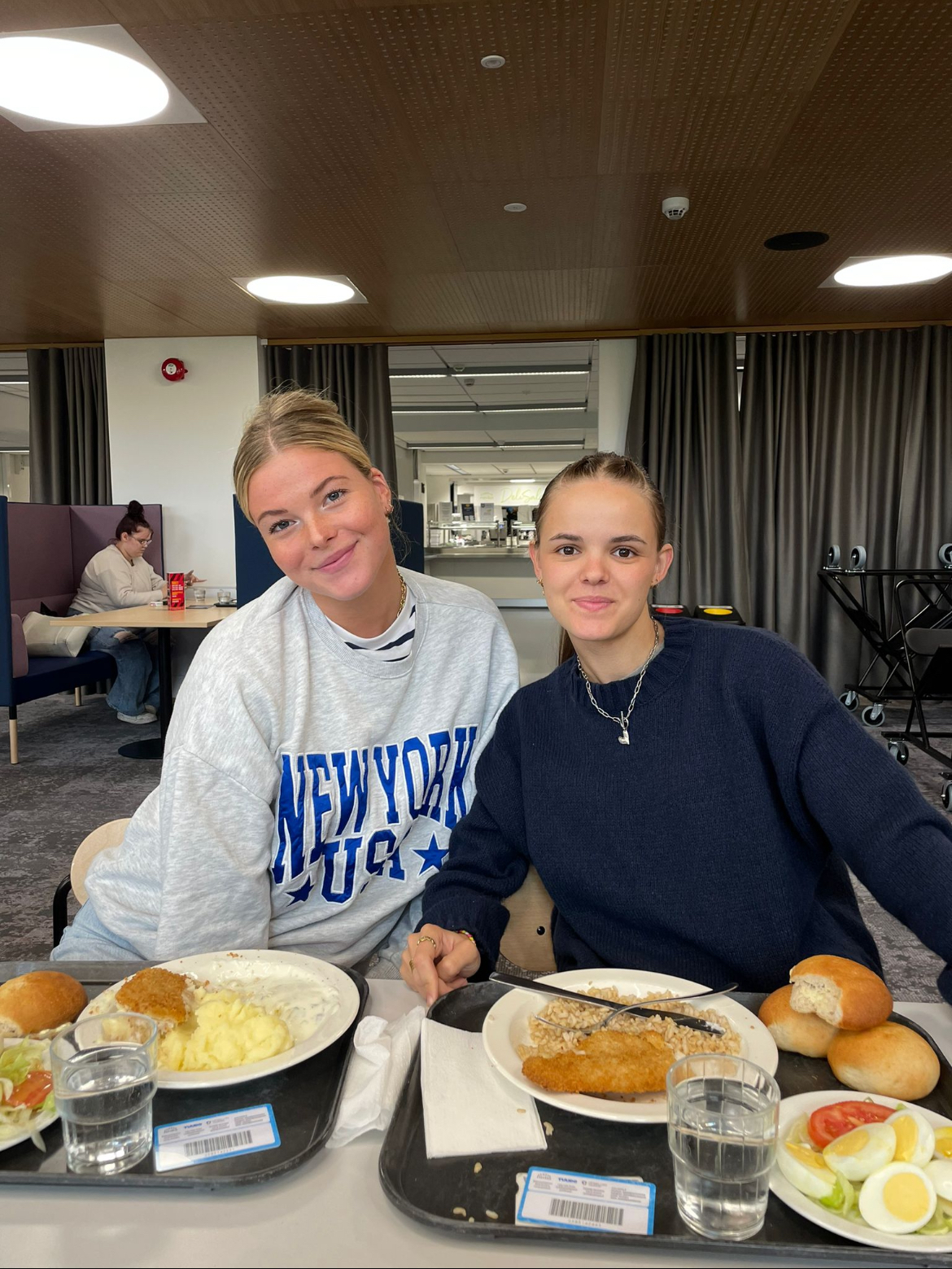For our second meeting, we had planned to have lunch at the Mensa (the school cafeteria). However, we had initially agreed to schedule a meeting at least every week, but due to busy schedules, we had to be flexible, and it has now been two weeks since our first meeting.
When we thought that one of our meetings could be to have lunch together, it seemed like a good idea to get to know how all the meals of the day are in both countries and the differences between them. Personally, I found it interesting as the timetables in Spain are usually totally different to those in most other countries.
Most of the time of the meeting was spent talking about meal times and traditions.
For example, Amber explained to me that in the Netherlands they usually eat breakfast at around 7.30/8.00 in the morning and lunch at 13.00 (in the case of my family in Spain, this is the norm, although it is not always the case). People in Spain usually eat between 14:00 and 15:30 h.
She also explained that they have dinner at 18.00h, as in most European countries, but this is not the case in Spain. In Spain, 18.00 is snack time. We usually have a piece of fruit, a yogurt or a sandwich.
Dinner time in Spain is between 21.00 and 23.00. This depends a lot on each person’s work and leisure time. In my case, I finish my training at 22.30, so I usually have dinner really late.
These schedules also sometimes make it difficult to have lunch or dinner as a family and this is something that Amber and I found we had in common. In some countries we try to have dinner as a family, but due to the timetables it is not always possible.
What surprised me the most is that they don’t eat two big plates of food for lunch, which is totally normal in Spain. In the Netherlands their big meal of the day is not at midday.
Also, I find it surprising that they wait 30 minutes after dinner to have dessert. In Spain this is something that is sometimes done but it is not “the general rule”.
I would also like to add that I really felt more comfortable speaking than at the first meeting because we were starting from a base and we had our notes on the pronunciation rules of the other country (in my case, Holland). In this way I was able to go through them to pronounce the different words that Amber had added to my vocabulary notebook. They were all words related to food dishes, utensils and family members (as they are the people with whom I have been in contact).
In conclusion, there are big differences between meal times in Spain and the Netherlands, but really fewer than I thought. It is also true that at all times I spoke of the norm in my country, but then all this can vary depending on each family and person and the rhythms of their lives.




Comments